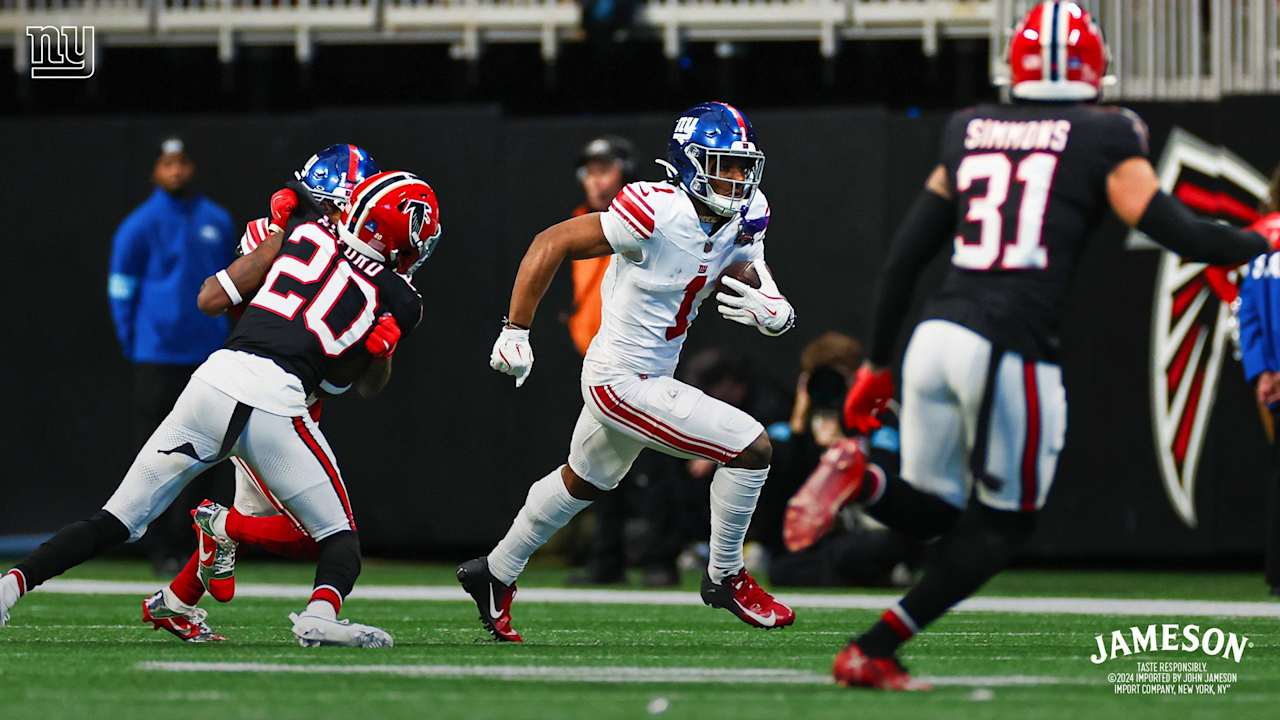NFL
New York Giants Quarter Pole Grades for the Offense

The first month of the 2024 NFL season, and the New York Giants sit at a disappointing 1-3 mark. This analysis shows how the New York Giants offense has fared through the first four games. (Defense, Special Teams, and Coaching will be separate entries. All stats via NFL NextGen Stats unless otherwise noted.)
The Giants’ offense has failed to get into the end zone in two games this season, both losses. As a result, they are averaging 15.0 points per game, down from the 15.6 points per game they averaged last season.
That shouldn’t be happening with this group of playmakers or with head coach Brian Daboll calling the plays, and a big reason for that has been the self-inflicted wounds–the penalties, the drops, the missed throws, etc.–that have killed otherwise promising looking drives.
Quarterback Daniel Jones hasn’t been horrible, but his inability to hit receivers in stride is a concern. Often, the receivers have to stop running to turn around and face him for the ball. That allows the defenders to catch up to them and limit the YAC this offense seems to rely on.
Even more concerning, though, is that Jones has been having this issue with either overthrowing or underthrowing receivers since the start of training camp. Is it because he’s subconsciously concerned about throwing a turnover, or is it something else? Whatever it is, Joens just doesn’t seem to be making enough of the plays a quarterback should be making, and that was especially evident in the loss to Dallas.
One thing it doesn’t appear to be is pressure. Jones is ranked 15th among quarterbacks in terms of pressure percentage (34.6%) and averages 2.8 seconds to throw. But his completion percentage over expected ranks 23 (-2.7%), despite an improved receiver set.
Turning to the Giants running game, lead back Devin Singletary has averaged 3.9 yards per carry and has a rush EPA (expected points added) of -14.9. But the most glaring and disappointing part of Singletary’s game is that he’s had two lost fumbles in four games, each coming at a critical time.
Singletary has faced a stacked box (8+ defenders) on 32.1% of his rushing attempts, which is fifth in the league (50% of those stacked boxes came in the Week 4 game against Dallas).
His rush success rate (percentage of carries resulting in positive expected points added per attempt) is 28.6%, the sixth-lowest percentage among 49 qualified running backs. The Giants’ rushing offense ranked 28th in average yards per game (85.3) and 29th in average yards per play (3.44).
Daboll likes to talk about complimentary football all the time. The Giants don’t appear to be getting that on offense, and it’s a problem.
Turning to the offensive line, there’s been some good news and bad news. The good news is that pass blocking has improved significantly from a year ago.
According to Pro Football Focus, the Giants’ offensive line is ranked 15th in pass-blocking efficiency (85.7) despite allowing 44 pressures (tied for sixth most).
Of those pressures, the quarterback has been responsible for 13 and four of the nine sacks against him.
The bad news has been the run-blocking. The Giants have deployed 12 personnel on 57 out of 154 offensive plays, fourth-most in the league), but the rush EPA is only -0.3 (the overall rank is 22nd in the league).
The tight ends have been non-existent in the passing game, catching just five out of nine pass targets for 57 yards and only 24 yards after the catch. They’ve been deployed mostly as blockers for the pass and run. The run blocking has been decent enough, but until this group gets more involved in the passing game, we just can’t give a fair grade to the unit.
To be fair, the coaches seem to be force-feeding rookie Theo Johnson into a full-time role, and he’s shown that he’s not quite ready to assume. Daniel Bellinger might not be an athletic freak at the position, but he has consistently shown himself to be a reliable receiver.
And thanks to the heavy reliance on heavy personnel, Chris Manhertz, the third tight end, is getting far more offensive snaps (102) than he probably should be getting given the makeup of this offense.
As expected, the receivers’ firepower has been boosted with the addition of Malik Nabers, who leads the Giants wideouts with a 110.4 rating and is among the league leaders in receiving yards, touchdowns, and receiving EPA (+24.1).
A big problem with the Giants receivers, in general, has been dropped passes–nine of them (out of 11), to be exact.
The Giants have primarily run with Nabers and Wan’Dale Robinson as their top two targets, with both of them mostly running intermediate routes. But the YAC hasn’t been there, mostly due to the receivers having to slow down or stop in their routes to catch off-target balls.
Brian Daboll has come up with some creative looks at times that have given the Giants the advantage, but it’s come down to execution, which has fluctuated.
The biggest issue with the coaching on this side of the ball has to be the tight ends and why they are not part of the passing game. The Giants have heavily relied on Nabers and Robinson in the passing game, accounting for about 66% of Jones’s pass targets.
We get that Nabers is the shiny new toy whose skill set has him on a path to greatness. Because of that skill set, Nabers is viewed as somewhat of a security blanket for when all else fails, and 9.9 times out of ten, if the ball is put in his zip code, he will come down with it.
But isn’t it ironic how coaches always talk about the fear of being made one-dimensional on offense, and yet here the Giants are, doing it to themselves by throwing the bulk of their passes to just two players among the other weapons–Jalin Hyatt, Darius Slayton, Daniel Bellinger, Theo Johnson, and Devin Singletary–they have?
Speaking of balance, the Giants have run the ball 99 times while attempting 145 passes. We understand that the run game has struggled, but we hope that this team has figured out ways to achieve a more balanced offense, which was among the priorities covered by the coaching staff during the mini-bye.










